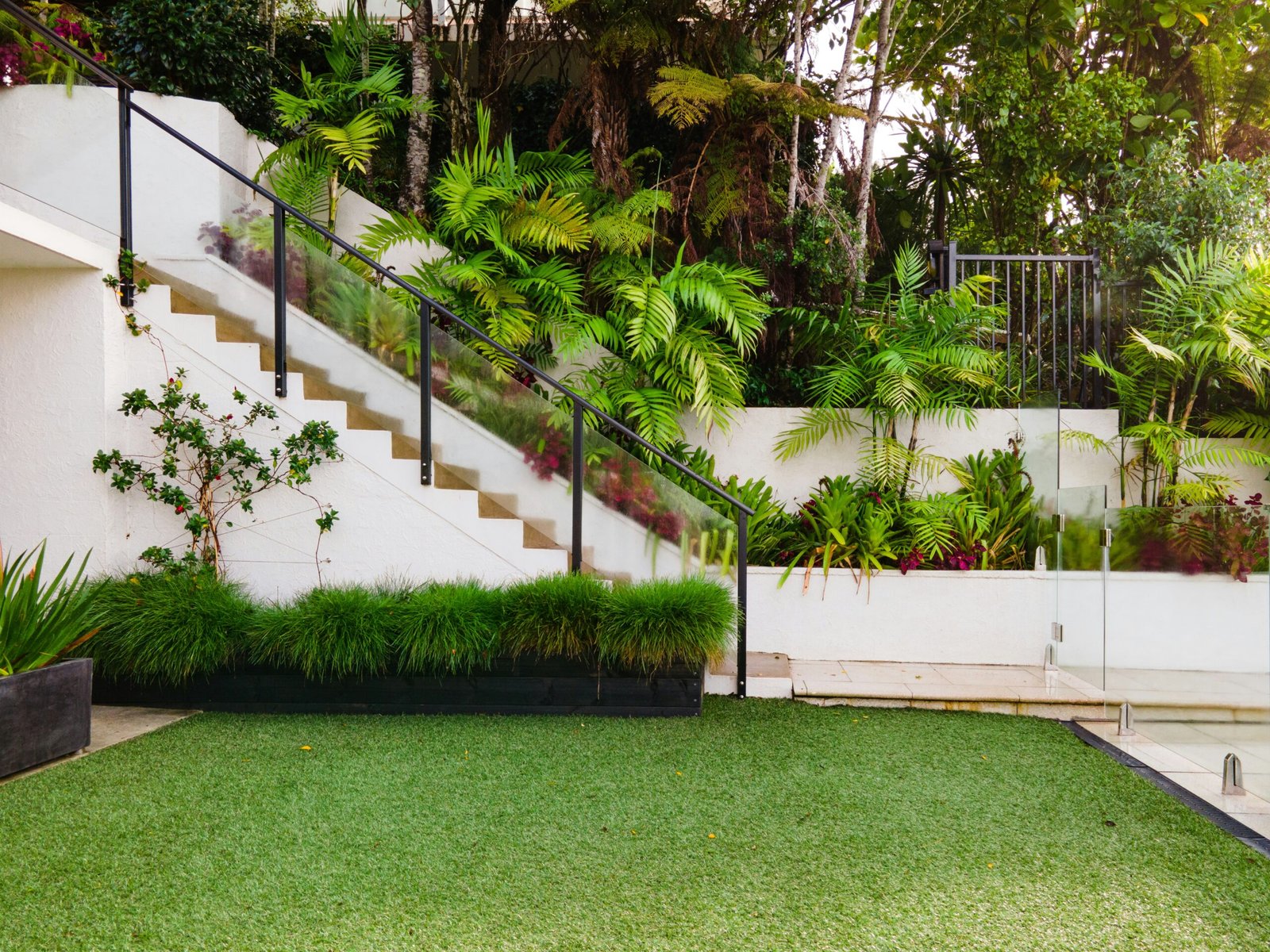You love the idea of a beautiful garden—but not the reality of spending hours pruning, watering, weeding, or replacing dead plants. Maybe you’ve tried before and ended up with patchy beds, wilted leaves, and that one overgrown shrub that looks like it might bite.
Or maybe you’re starting from scratch and already feeling overwhelmed. The choices. The upkeep. The pressure to “do it right.”
Here’s the truth: you don’t need to be a full-time gardener to have a space that looks lush, vibrant, and well-loved. And no, “low-maintenance” doesn’t have to mean plain or boring either.
In this guide, you’ll get plant picks that are not only tough and easy to grow, but genuinely beautiful—so your garden thrives even when life gets busy. Whether you’ve got a shady balcony, a sunny yard, or something in between, you’ll walk away knowing exactly what to plant and why it works.
Let’s make gardening feel easy again.
What Makes a Garden “Low-Maintenance”?
Let’s clear something up straight away: low-maintenance doesn’t mean no maintenance. But it does mean choosing plants and garden features that do most of the heavy lifting for you.
Here’s what to look for if you want your garden to be beautiful and easy to care for:
1. Drought-Tolerant Plants
These plants don’t need frequent watering and are perfect if you forget to water now and then—or if you just don’t want to be tied to a hose in the summer.
Look for terms like drought-hardy, water-wise, or xeriscape-friendly. Think lavender, sedum, and ornamental grasses.
2. Perennials Over Annuals
Perennials come back year after year, which means you don’t have to keep replanting. Once they’re in and established, they basically take care of themselves with a little seasonal tidy-up.
3. Slow-Growing or Compact Plants
Fast-growing plants might sound like a good idea, but they often need more trimming and care. Slow-growers keep their shape better and don’t sprawl all over the place.
4. Pest- and Disease-Resistant Varieties
Some plants attract every slug, bug, and fungus in the neighbourhood. Others just keep on growing without a fuss. Go for those. Native plants are often a great bet here, as they’ve adapted to your local conditions.
5. Evergreens or Long-Lasting Colour
Evergreens give you structure and colour all year round. Plants with long bloom times or interesting foliage also keep things looking nice without constant swapping.
6. Right Plant, Right Place
This is the golden rule. A sun-loving plant stuck in deep shade is going to struggle no matter how easy it’s meant to be. Pay attention to light levels, soil type, and moisture. Choose plants that fit your space, not ones you have to fight to keep alive.
Top Low-Maintenance Plant Picks
Here’s where the magic happens—plants that look amazing, thrive with minimal care, and won’t leave you stressed when life gets busy. Whether you’re planting in beds, borders, pots, or shady corners, you’ll find something here that just works.
🌿 Perennials That Keep Coming Back
These plants return year after year with hardly any help:
- Geranium ‘Rozanne’ – Long-flowering, tough as nails, and spreads nicely without becoming a pest.
- Sedum (Stonecrop) – Succulent-like leaves, drought-hardy, and great late-summer flowers that bees love.
- Heuchera (Coral Bells) – Colourful foliage in purples, silvers, and limes—great for shady spots too.
🌸 Hardy Shrubs That Behave Themselves
These shrubs offer structure and interest without constant pruning:
- Spiraea japonica – Compact, flowers beautifully, and keeps its shape.
- Lavender – Loves sun and dry soil. Cut it back once a year and you’re golden.
- Boxwood (Buxus) – Slow-growing and tidy. Great for borders or as low hedging.
🌼 Colourful Ground Covers That Fill Space Fast
Cover bare patches and keep weeds down:
- Creeping thyme – Smells amazing, flowers in summer, and you can even walk on it.
- Ajuga (Bugleweed) – Glossy leaves, deep purple flowers, and thrives in shade.
- Erigeron karvinskianus (Mexican Fleabane) – Soft daisy-like blooms and a wild, romantic vibe.
☀️ Drought-Tolerant Stars for Sunny Spots
These won’t sulk if you miss a watering:
- Euphorbia – Striking shapes and colours, barely needs anything.
- Russian Sage (Perovskia) – Silvery stems, soft purple flowers, and zero fuss.
- Agapanthus – Bold, blue or white blooms on tall stems. Loves neglect.
🪴 Perfect for Pots and Containers
No garden? No problem. These plants are stars in pots:
- Hosta (for shade) – Gorgeous foliage and thrives in containers.
- Pelargonium (Geranium) – A summer classic. Colourful, cheerful, and practically self-sufficient.
- Carex (Sedge grasses) – Add texture and movement with very little maintenance.
🌳 Shady Corner Champions
Low light? Try these:
- Ferns (like Dryopteris) – Elegant, hardy, and great for a woodland vibe.
- Brunnera macrophylla – Heart-shaped leaves and tiny blue flowers in spring.
- Astilbe – Feathery flowers and lush greenery, thrives in moist shade.
Bonus: Design Tips for a Beautiful, Easy Garden
Choosing the right plants is half the battle. The other half? Setting things up so your garden stays low-maintenance. A few smart design tricks can save you hours of weeding, watering, and fixing later on.
1. Group Plants with Similar Needs
Put drought-lovers together. Shade-dwellers in the same spot. It’s easier to water and care for plants when they share the same preferences. No more juggling which bed needs what.
2. Use Mulch (Seriously)
A thick layer of mulch does wonders—it keeps weeds down, locks in moisture, and makes the whole space look tidy. Go for bark, gravel, or even cocoa shell mulch if you want a more polished finish.
3. Pick Bigger Pots
If you’re growing in containers, size matters. Larger pots dry out more slowly, meaning you’ll water less often. They also give roots more space to grow strong and stable.
4. Layer Your Planting
This makes the space look full and vibrant without needing extra effort. Think tall grasses or shrubs at the back, mid-height perennials in the middle, and ground covers or trailing plants at the front.
5. Invest in a Few Self-Watering Containers
Especially useful if you’re forgetful or travel often. These take the pressure off and help your plants stay healthy during dry spells.
6. Let Your Lawn Relax—or Replace It
If you hate mowing, consider reducing your lawn size or swapping it out completely. Use low-growing ground cover, gravel with stepping stones, or a mix of bark paths and planted beds.
Common Pitfalls to Avoid
Even the best plants can become a headache if you don’t set things up right from the start. Here are the most common traps people fall into when trying to create an easy-care garden—and how to dodge them.
1. Choosing Plants Just for Looks
It’s tempting to grab the prettiest thing at the garden centre, but if it needs constant pruning, hates your soil, or dies at the first cold snap, it’s not worth it. Always check the plant tag—or better yet, do a quick search for how it behaves long term.
2. Ignoring Sunlight Needs
This one’s a classic. A sun-lover in full shade won’t flower. A shade plant in baking sun will scorch. Make sure you know how much sun each spot gets and match plants accordingly. It’s the simplest way to avoid failure.
3. Overcrowding
Packing in too many plants might look lush at first, but it leads to poor airflow, more pests, and extra pruning. Give your plants the space they need to grow into themselves—your future self will thank you.
4. Underwatering or Overwatering
Low-maintenance doesn’t mean no watering. If you’re planting in pots or sandy soil, you may still need to water during hot spells. At the same time, some plants hate wet feet—make sure your containers drain properly.
5. Forgetting to Mulch
We said it before, we’ll say it again: mulch is your best friend. No mulch = more weeds, more watering, and messier beds.
6. Buying Trendy, High-Maintenance Plants
Just because a plant is trending on Instagram doesn’t mean it’s easy to grow. Be wary of fads—many of them are better suited to greenhouses than real-life gardens.
Your Easy-Care Garden Starts Here
You don’t need to be a plant expert or spend your weekends knee-deep in compost to have a garden that looks incredible. With the right plant choices, a bit of smart planning, and a few key tools like mulch and bigger pots, you can build a space that practically takes care of itself.
Start small if you need to—choose just three or four of the plants from this list that suit your space. Focus on getting the sunlight right, group them by care needs, and don’t overthink it. Gardening should feel good, not like a chore.
And if you’re ever in doubt, just remember: the best garden is the one you actually enjoy spending time in. Even if you don’t touch it for a week (or two), it should still greet you with colour, calm, and a little bit of wild joy.
Here’s to a beautiful garden—with way less effort.
Alex is the creator of Homely Haven, a space dedicated to simple, stylish ideas for interiors and gardens alike. With a passion for cozy living rooms, inviting outdoor spaces, and practical DIY solutions, Alex shares tips and guides that help turn any house into a true home.
From budget-friendly decorating hacks to weekend garden projects, the goal is always the same: to inspire you to create spaces that feel personal, beautiful, and welcoming. When not writing, Alex is usually rearranging furniture, sketching new garden layouts, or exploring design trends for the next project.








